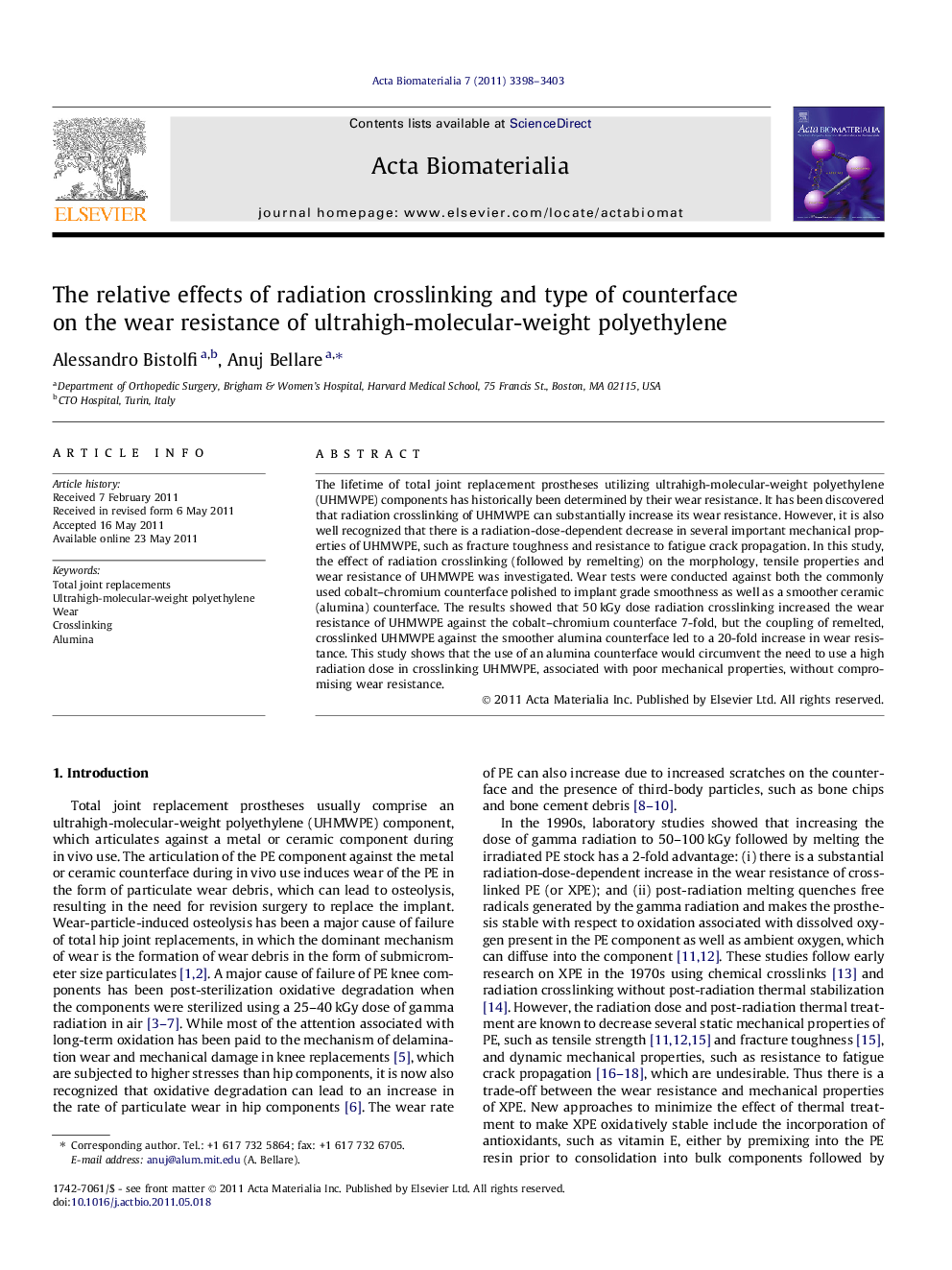| Article ID | Journal | Published Year | Pages | File Type |
|---|---|---|---|---|
| 884 | Acta Biomaterialia | 2011 | 6 Pages |
The lifetime of total joint replacement prostheses utilizing ultrahigh-molecular-weight polyethylene (UHMWPE) components has historically been determined by their wear resistance. It has been discovered that radiation crosslinking of UHMWPE can substantially increase its wear resistance. However, it is also well recognized that there is a radiation-dose-dependent decrease in several important mechanical properties of UHMWPE, such as fracture toughness and resistance to fatigue crack propagation. In this study, the effect of radiation crosslinking (followed by remelting) on the morphology, tensile properties and wear resistance of UHMWPE was investigated. Wear tests were conducted against both the commonly used cobalt–chromium counterface polished to implant grade smoothness as well as a smoother ceramic (alumina) counterface. The results showed that 50 kGy dose radiation crosslinking increased the wear resistance of UHMWPE against the cobalt–chromium counterface 7-fold, but the coupling of remelted, crosslinked UHMWPE against the smoother alumina counterface led to a 20-fold increase in wear resistance. This study shows that the use of an alumina counterface would circumvent the need to use a high radiation dose in crosslinking UHMWPE, associated with poor mechanical properties, without compromising wear resistance.
